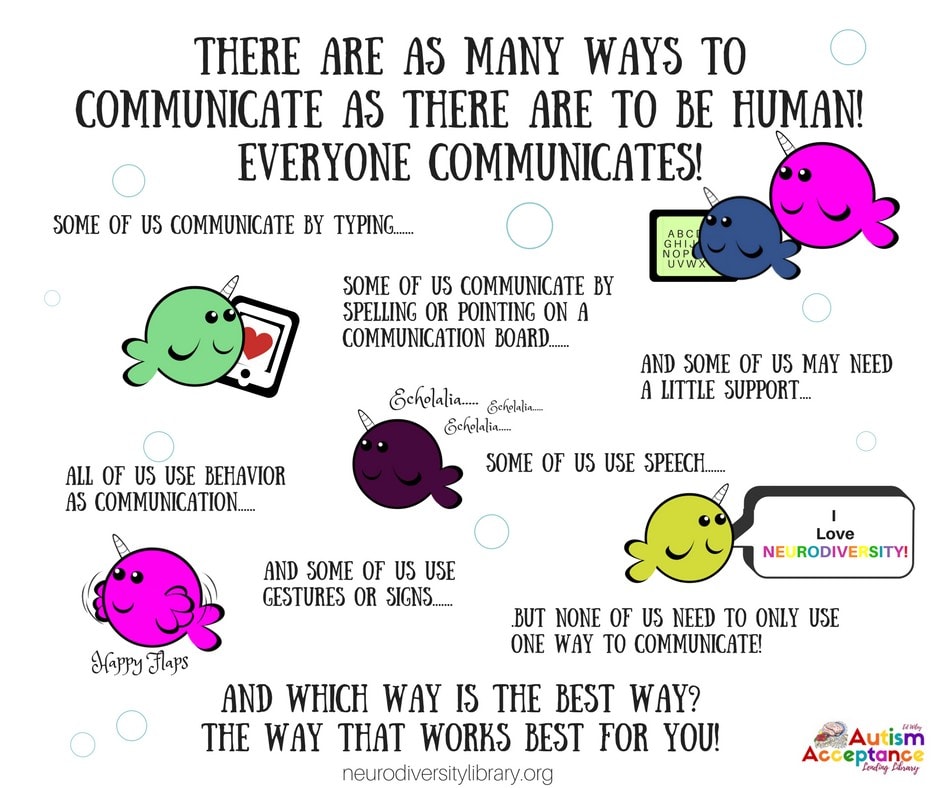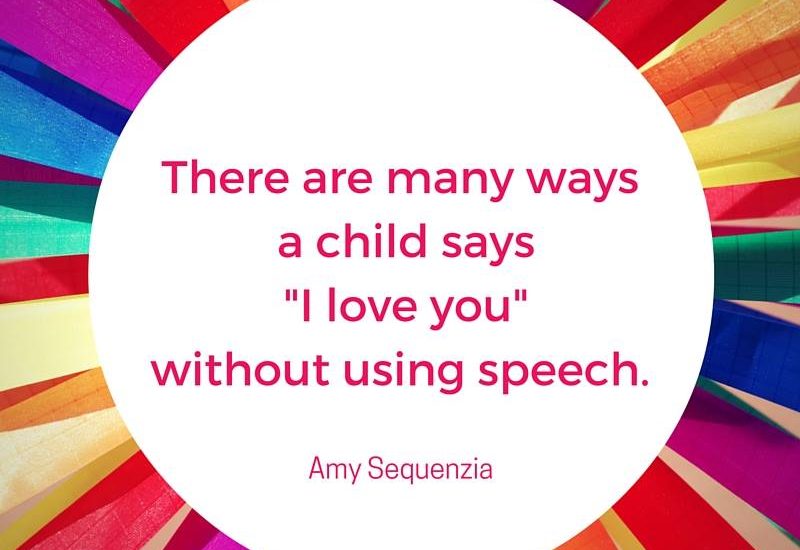
KJIPUKTUK (Halifax) – As I’ve mentioned in a previous post, it is very common for non-autistic parents of autistic children to talk about how desperate they are to hear their autistic children say “I love you”. So they typically enroll their kids in speech therapy or a publicly-funded program like EIBI which is said to “help children with autism develop their language and vocabulary, improve communications and social skills.”
More often than not, though, when they say “helping children develop their language and vocabulary, improve communication skills….”, what they really mean is helping children develop oral speech.
Even if that may not be the best method of communication for the non-speaking autistic.
One key aspect of autistic culture that many non-autistic parents are never exposed to are the many non-speaking autistic activists. Non-speaking autistics are often described as “low-functioning” simply because they don’t speak like a so-called “normal” person would. However, some of the most eloquent autistic activists do not speak orally; rather, they communicate entirely through typing, AAC (augmentative and alternative communication), or other means.
Some of the most well-known non-speaking and part-time speaking autistic activists include:
- Amy Sequenzia. Easily one of the most respected autistic activists of all time, Amy is a non-speaking and multiply disabled writer and poet. She blogs at Ollibean and the Autistic Women & Nonbinary Network, and has contributed to several other blogs, websites and anthologies.
- Mel Baggs. Mel is best known for their popular video “In My Language” which they posted on YouTube in January 2007. It was covered several times on CNN and today holds a crucial place in autistic culture.
- Cal Montgomery. Cal has been involved in disability rights activism for over twenty years. He has written for several disability-related publications, including Ragged Edge and NOS Magazine, is a member of the disability rights organization ADAPT, and is a survivor of long-term institutionalization.
- Emma Zurcher-Long. Emma is a 16-year-old autistic girl who mostly types to communicate. She blogs at Emma’s Hope Book, and recently co-directed a short documentary about her life, Unspoken.
- DJ Savarese. DJ is a non-speaking autistic poet who communicates via a text-to-speech synthesizer. Like Emma, he also recently co-produced a documentary about his life, Deej.
These are just a few of the many non-speaking autistic activists. They prove that autistic people can and do have a high quality of life, even if they don’t speak and/or need help with everyday tasks.
But if you pay attention to the mainstream autism organizations, including those in Canada, you’d never know it.
Because the mainstream organizations never talk about non-speaking autistics.
For that matter, neither does the mainstream media.
Oh, they’re happy to talk about autistics who are “formerly non-verbal” and who became able to speak through intensive interventions. And they also sometimes discuss AAC.
But in terms of those autistics who are, and always have been, non-speaking, the mainstream autism orgs NEVER discuss them on their social media or in any of their promotional material.
This needs to change. And it needs to change YESTERDAY.
The most significant thing that needs to be addressed is the idea that saying “I love you” via oral speech is the only way to say it. In fact, as the 2015 report on Nova Scotia’s Early Intensive Behavioral Intervention program states at the very beginning:
“The first time a child says ‘I love you’ is an emotional milestone that most parents will never forget. When you wait five years to hear those words – as can be the case for a parent of a child with Autism Spectrum Disorder – the impact is even more profound.”
And two years ago, during the heated debate in Ontario on whether to extend IBI services for autistic children older than five years, several parents made extremely ableist comments such as this:
“This is the worst thing that could have happened to our family, short of him getting cancer or dying because I will never know what his true potential was or what it could have been. Realizing I may never hear ‘Mom, I love you’ is enough to kill a mother inside.”
But the fact is, there are many ways to say “I love you” without using oral speech. Moreover, as Amy Sequenzia says, the real problem is that the parents are unable to value their non-speaking autistic children simply because they don’t use oral speech. Also, when parents make their children’s autism all about THEM, as is all too common, it is incredibly selfish.
Far too many parents often forget – or in some cases refuse – to even attempt to listen to their children communicate in other ways that are more comfortable for the kids. It is concerning when medical and psychological professionals don’t even try to give non-speaking autistics a means of communication that works best for them. If and when they do, it’s often only after they try to get them to communicate in a way that makes the non-autistic majority comfortable.
There are many different ways to communicate. AAC devices, letterboards, text-to-speech synthesizers, gestures or signs….oral speech is not the only method that matters!
So what do we do about this?
The most important thing is for the mainstream autism organizations to admit that they are choosing to ignore non-speaking autistics. Non-speaking autistics have always been around, just like autistics who do use oral speech. And everyone – the medical and psychological professionals, the non-autistic parents, the mainstream media – needs to STOP pathologizing non-speaking autistics and using functioning labels.
When autism organizations are contacted by families of non-speaking autistics looking for advice, they should tell the families about the various non-speaking autistic activists mentioned above. These families will learn A LOT from them!
Families of non-speaking autistics should also educate themselves on AAC and other alternative means of communication, and then work on figuring out which method works best for their children. And even if their autistic children do speak, it still doesn’t hurt to teach them about AAC, as there are many autistics who are part-time AAC users.
I leave the last word to Amy Sequenzia:
“If you can really listen to your Autistic child, you will never be worried about when they will say ‘I love you.’”
If you can, please support the Nova Scotia Advocate so that it can continue to cover issues such as poverty, racism, exclusion, workers’ rights and the environment in Nova Scotia. A paywall is not an option, since it would exclude many readers who don’t have any disposable income at all. We rely entirely on one-time donations and a tiny but mighty group of dedicated monthly sustainers.





